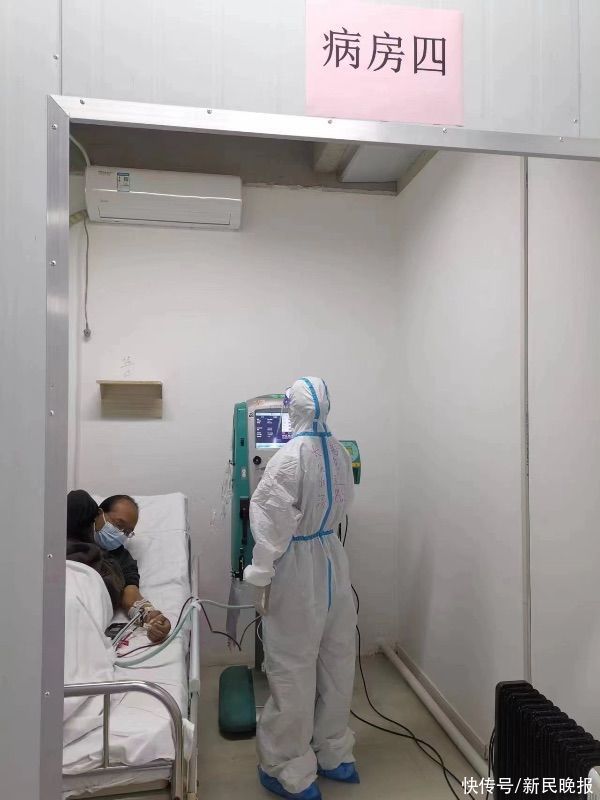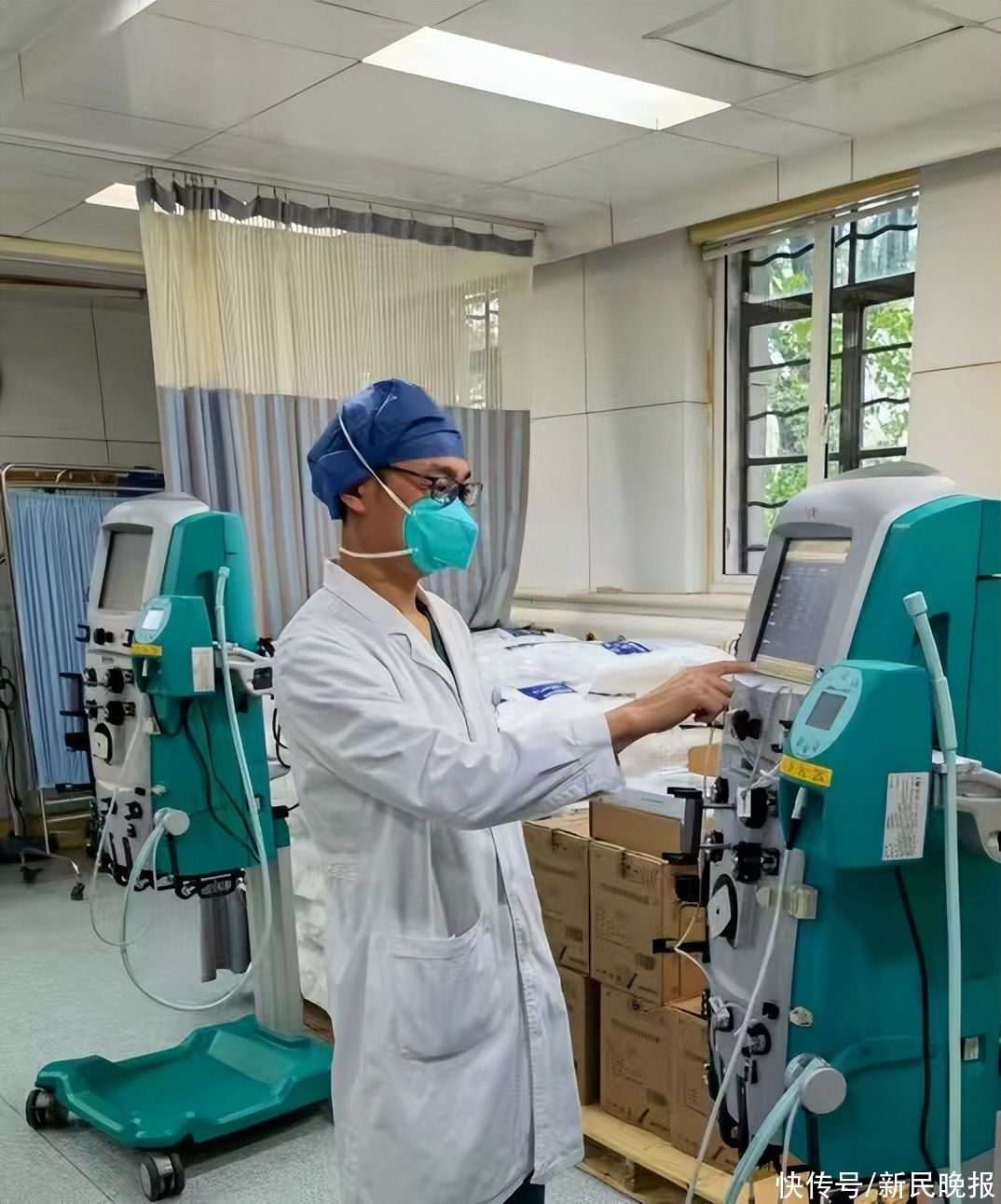
Description: Medical staff under standardized protection for patients to provide pictures for hemodialysis interview subjects (the same below)< /span>
In the face of the sudden new crown epidemic, in order to alleviate the dialysis needs of the majority of hemodialysis patients and block the possible risk of cross-infection in ordinary hemodialysis rooms, the Naval Military Medical University No. An affiliated hospital (Shanghai Changhai Hospital) took emergency action, set up a special place, and urgently collected 6 bedside hemodialysis equipment. It only took 48 hours. On March 28, the first “emergency hemodialysis room was built and opened in Shanghai. ”, One hemodialysis machine, one hollow fiber, and one pipeline connecting patients, under the precise control of medical staff, set up a continuous lifeline for uremia patients.
It should be known that hemodialysis treatment for uremia patients is a treatment method that can achieve the elimination of metabolic wastes in the body, maintain electrolyte and acid-base balance, and prolong the patient’s life. Dialysis treatment of 2 to 3 times a week, 4 hours each time is the basic guarantee for the life of patients with uremia. Once treatment is delayed, life-threatening complications such as hyperkalemia and heart failure are likely to occur.
92-year-old grandfather Wang and his wife and son are both uremia patients and have been treated in the hemodialysis room of Changhai Hospital for many years. On April 2, the building they lived in was closed due to positive cases. “Our husband and wife were really anxious at the time. What should we do with our dialysis at the moment of the epidemic?” Just as the old couple was extremely anxious, they received a call from the emergency hemodialysis room of Changhai Hospital, “Grandpa Wang, we have received a call from the neighborhood committee. When the news arrives, you and your grandmother don’t have to worry, you can come to the hospital for hemodialysis, we have built a new temporary emergency hemodialysis room, which is aimed at people in close contact, and the single room is very safe.” The two elderly people’s hemodialysis treatment continued.
On April 7, Mr. Zhang was tested positive for nucleic acid, and he was immediately admitted to the isolation hospital in Pudong for treatment and dialysis, and turned negative two weeks later. “After I turned negative, I was always worried about the subsequent hemodialysis. The hospital arranged for me without saying a word. Thank you so much, I was not discriminated against because of being positive.” Today is the day that Mr. Zhang was released from observation. He also returned from the emergency hemodialysis room to the normal hemodialysis room to continue regular hemodialysis. Seeing that the former patient greeted him warmly, Mr. Zhang kept wiping the tears from the corners of his eyes.
In order to ensure the high-speed operation of the emergency hemodialysis room, the Department of Nephrology of Shanghai Changhai Hospital selected the backbone force to form an “emergency hemodialysis team”, and the three-level protection is for the treatment of “special” dialysis patients . After the end of the first shift, we will promptly eliminate the environment, count materials, and prepare equipment, so as to make full preparations for the next shift to fight the “epidemic”. Dialysis is carried out in three shifts every day until late at night. Zhao Junhua, the head of the nursing team, has not been home for a month. She keeps in mind the phone numbers of the patient and the neighborhood committee she belongs to, and always coordinates the patient’s treatment. In order to ensure the normal operation of the hemodialysis equipment, engineer Wang Xiaopeng is stationed in the department every day, and uses the night time to conduct “inspections” on the hemodialysis machine and water treatment equipment to find hidden faults. At this time, his lover is also fighting for hemodialysis in another hospital. room.

Description: Engineer Wang Xiaopeng is debugging a new machine em>
The reporter learned from the hospital that 51 hemodialysis patients received treatment in the emergency hemodialysis room in the past month, and 225 cases of continuous renal replacement therapy were carried out, with a total treatment time of 675 hours. 19 of them were transferred back to the ordinary dialysis room after being released from observation. In the past month, all medical staff have achieved zero infection, zero shunting of hemodialysis patients, and zero closed-loop hemodialysis centers.
With the continuous improvement of epidemic prevention and control in Shanghai, the number of patients with close and sub-close contact in the emergency hemodialysis room has decreased significantly, while more patients have turned negative from positive to negative. The number of patients in the hemodialysis room is gradually decreasing, and now the situation of bed and others has appeared.
Guo Zhiyong, director of the Department of Nephrology, said: “The key to the treatment of hemodialysis patients is timely and effective treatment, and they cannot afford to delay. Focusing on the ‘last mile’ of seeing a doctor during a special period, benefiting patients and speeding up the resumption of work and production.”
Xinmin Evening News reporter Gaoyang correspondent Bai Jin
span>